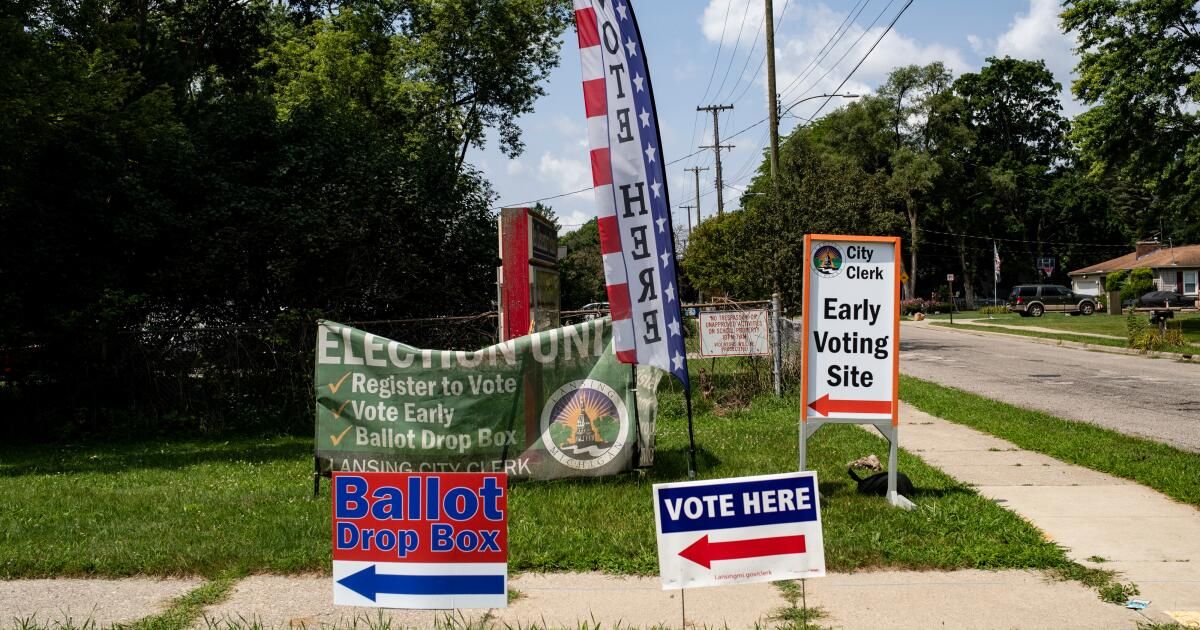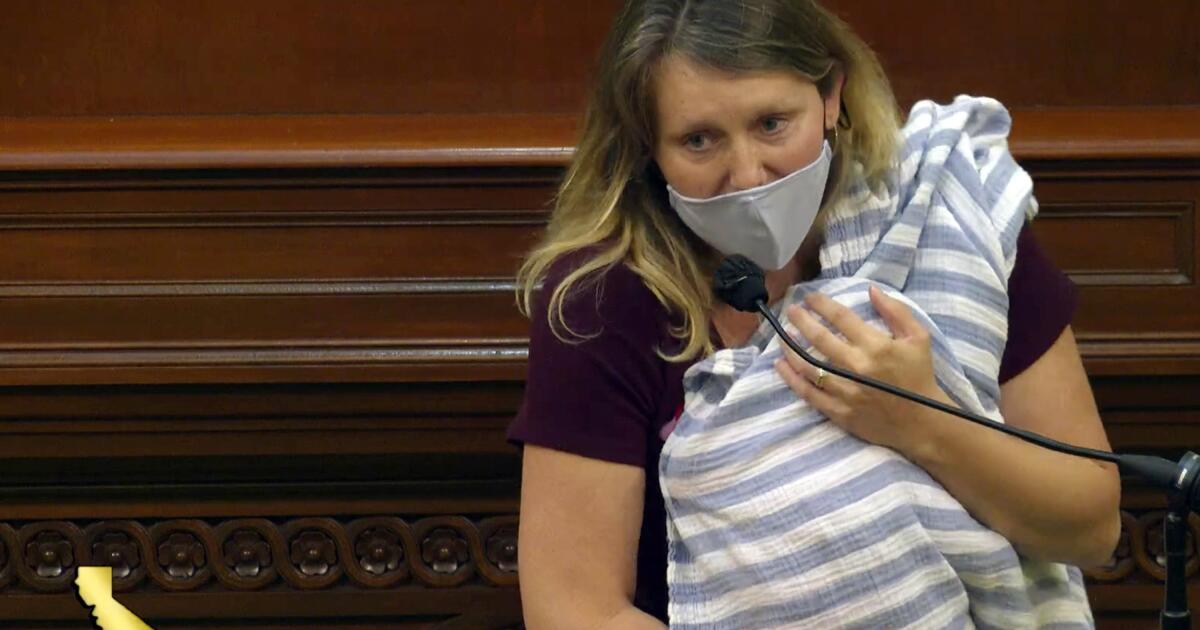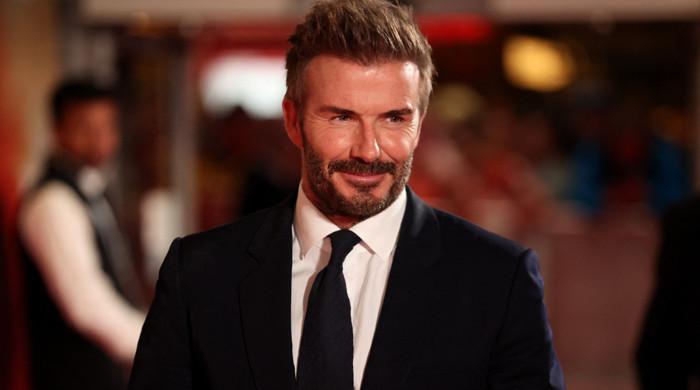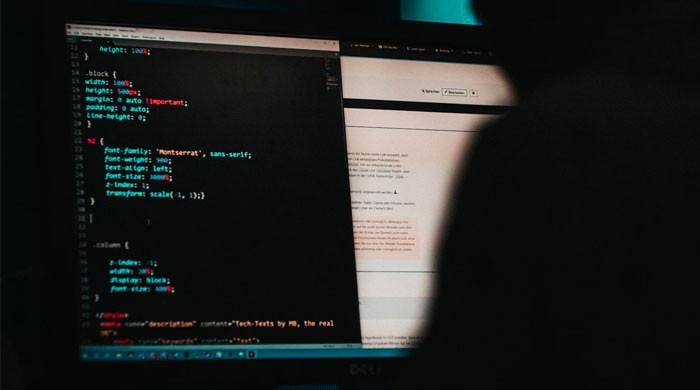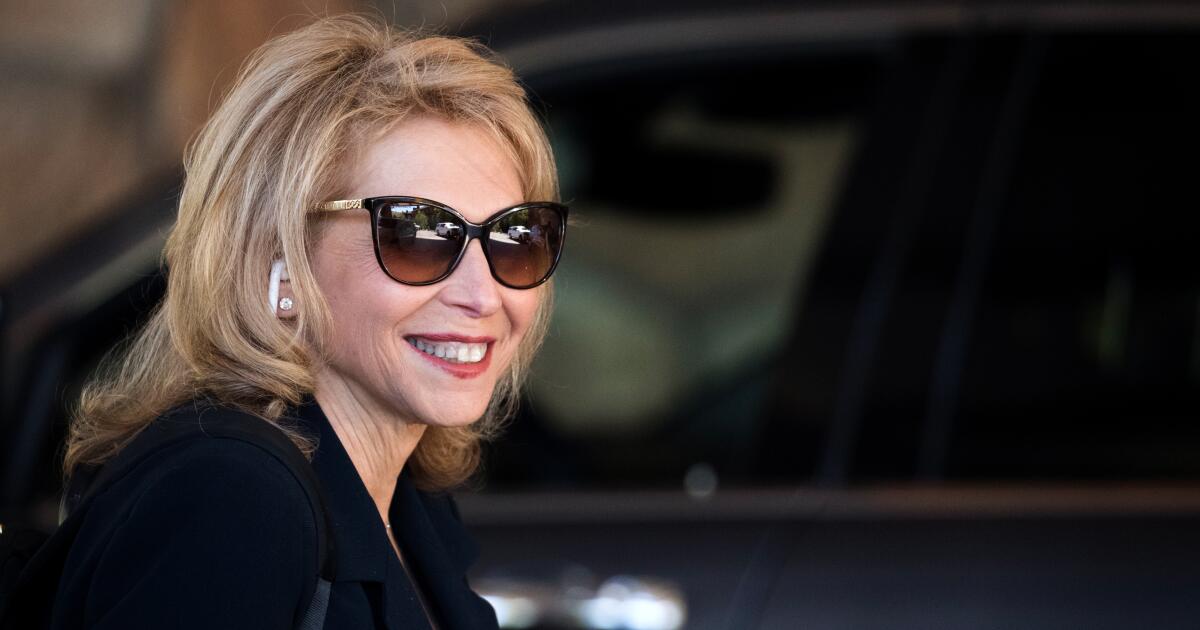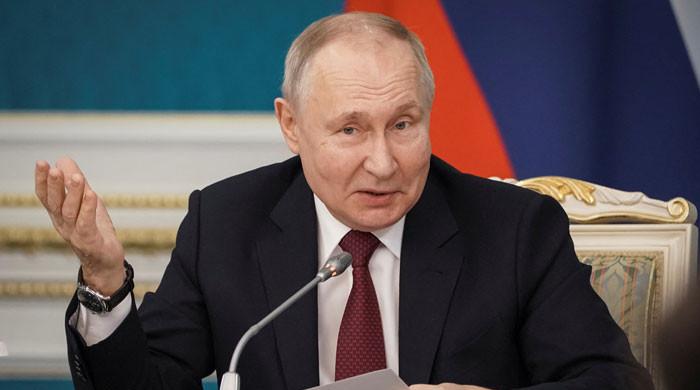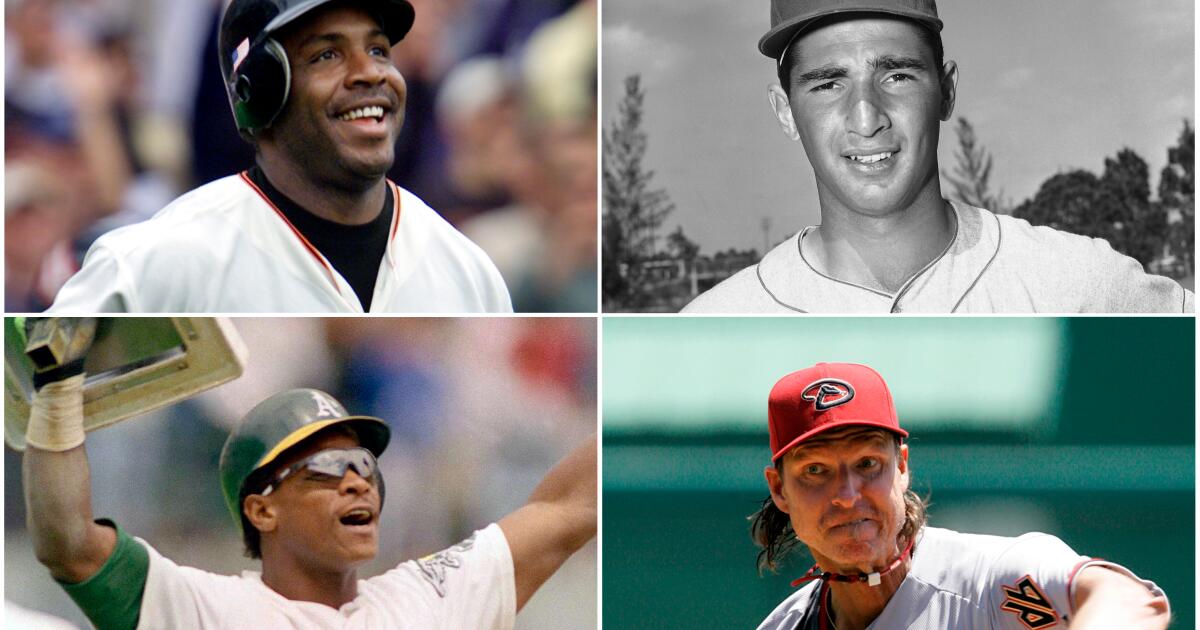Brandy Jones and Justin Patterson were hoping to find a restaurant that offered prime rib on the menu as they walked down the main street of this small central Michigan town of about 1,750 people.
Justin Patterson and Brandy Jones in downtown Evart, Michigan.
(Connor Sheets/Los Angeles Times)
The couple said they have seen little evidence of this year’s presidential election in their hometown outside Lansing, during the nearly two-hour drive to the Evart area where they were vacationing, or even on social media. That’s a major change from past campaigns, according to Jones.
“I actually see a lot less campaign signs and ads,” she said Monday afternoon. “Usually at this time of election year, we get bombarded with them and I would be upset. This year there is nothing.”
While the relative prevalence of campaign signs is not a scientific indicator of voter enthusiasm, Election Day is only three months away and you wouldn't know it by visiting or driving through many rural areas of Michigan.
A Times reporter who drove hundreds of miles across a wide swath of the state last week — mostly on rural main streets, country roads, gravel roads and highways — saw just 16 presidential campaign signs and flags and a single billboard, all in support of former President Trump.
Several Michigan political experts agreed it was a far cry from the ubiquitous pro-Trump signs and flags that characterized even the early days leading up to the last two presidential elections.
“I'm starting to see some here and there in the last few weeks, but it's been remarkably different than 2016 or 2020,” said Thomas Ivacko, the recently retired executive director of the University of Michigan's Center for Local, State and Urban Policy, who travels frequently to largely rural Benzie County in the state's northwest.
In more than two dozen interviews last week, rural Michiganders attributed that gap to a weariness of what they describe as a broken political system, fear of repercussions for sharing their opinions and a lack of passion for politicians in the highest offices of both parties.
The result? In rural Michigan, the 2024 presidential election is virtually invisible.
“This time it's not so big”
Along a 42-mile stretch of hilly back roads in Ingham and Livingston counties east of Lansing, dozens of signs advertised a local “U-Pick Festival,” equestrian summer camps and politicians from other parties — but only a flag and a Trump sign were visible, and none for President Biden or the presumptive Democratic vice presidential nominee, Kamala Harris.
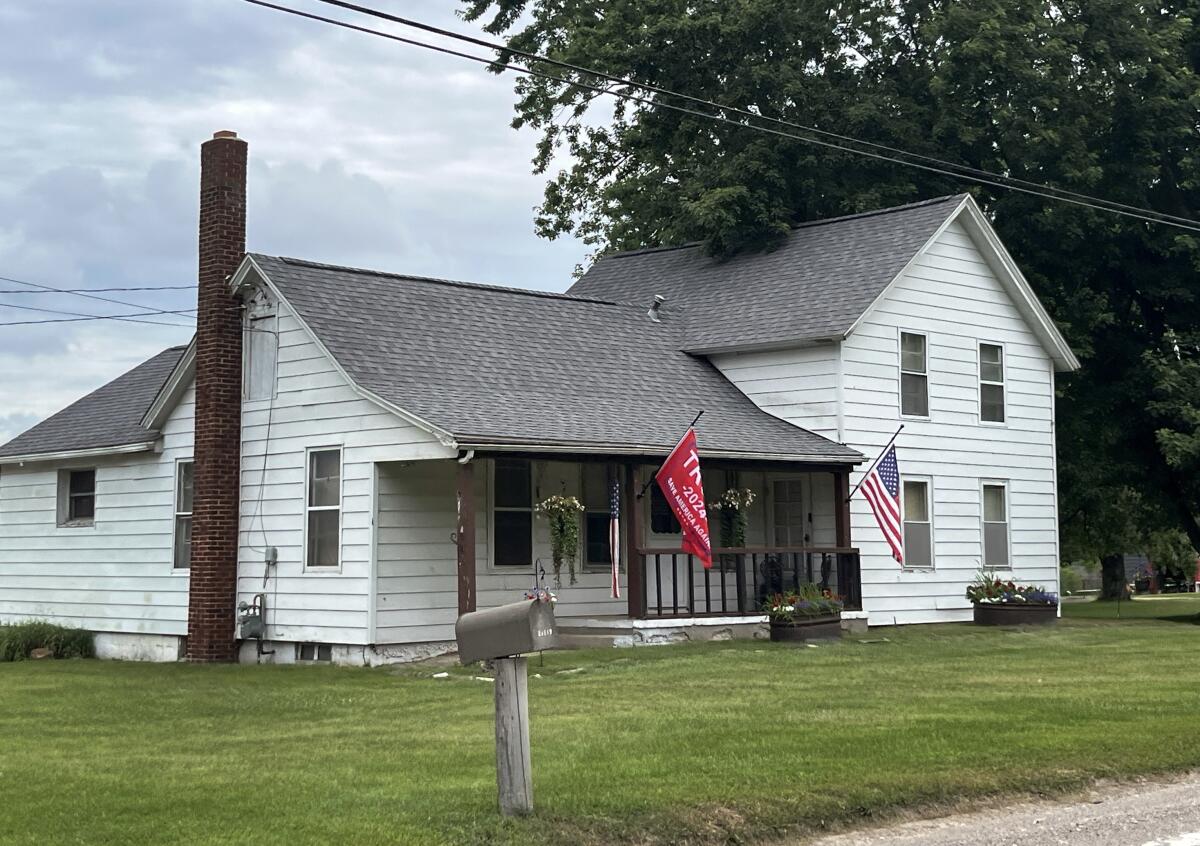
A Trump flag flies outside a home on a rural road in Macomb County, Michigan.
(Connor Sheets/Los Angeles Times)
As Joan Saunders headed to Christians Greenhouse in rural Williamstown to buy plants, she said she is “pro-Trump” but does not have a sign or flag supporting his candidacy outside her home.
“This time around, the election isn’t as important,” said Saunders, who lives in an unincorporated community in Ingham County. She said she, too, has seen much less visible support for presidential candidates this election cycle. “People know who they’re voting for and they’re tired of the games.”
Nicholas Valentino, a political science professor at the University of Michigan, cautioned that it is still too early to draw broad conclusions from the shortage of signs and flags.
He said much of the political emphasis in Michigan is centered on Tuesday's primary, which will help determine who fills the vacant U.S. Senate seat, the 13 seats in the House of Representatives and a number of state and local offices. There will likely be “a pretty dramatic shift” after the primary, he said, as both political parties are pouring money and energy into the presidential election.
“Saliency and energy in the race are very important, and will be decisive when we know who wins in November,” Valentino said. “The outcome of the election will not depend so much on how each campaign succeeds in persuading voters, but on mobilization.”
Michigan is one of the few swing states, one with a recent history of hotly contested elections whose winner also claimed the White House. In 2016, Trump beat Hillary Clinton in Michigan by just about 11,000 votes; four years later, Biden won the state by more than 150,000 votes.
In the months before Biden dropped out of the presidential race on July 21, polls consistently showed Trump beating the president in Michigan, usually by fairly narrow margins. But a Bloomberg News/Morning Consult poll conducted July 24-28 showed Harris holding an 11-point lead over Trump in the state.
Several Michigan political experts described the poll as an outlier and said the race will be much tighter in November. While most Michigan voters live in big cities and suburbs, the rural vote could play a key role in a hotly contested election.
Some experts expect high voting rates in the state this year. Corwin D. Smidt, an associate professor of political science at Michigan State University, said by email that “I will know much more after Tuesday’s primary,” but “right now my models expect turnout to be very similar to 2020.”
'Some people are tired of his antics'
As the county seat of Macomb County, northeast of Detroit, Mount Clemens is home to more than 15,000 people, making it a quiet suburb far removed from the motor city rather than a small rural town like Evart. Trump won Macomb County by just 8 percentage points in 2020, a much smaller margin than in rural counties like Osceola, where Trump won more than 72% of the vote, and Gratiot, where the former president defeated Biden by more than 28 percentage points.
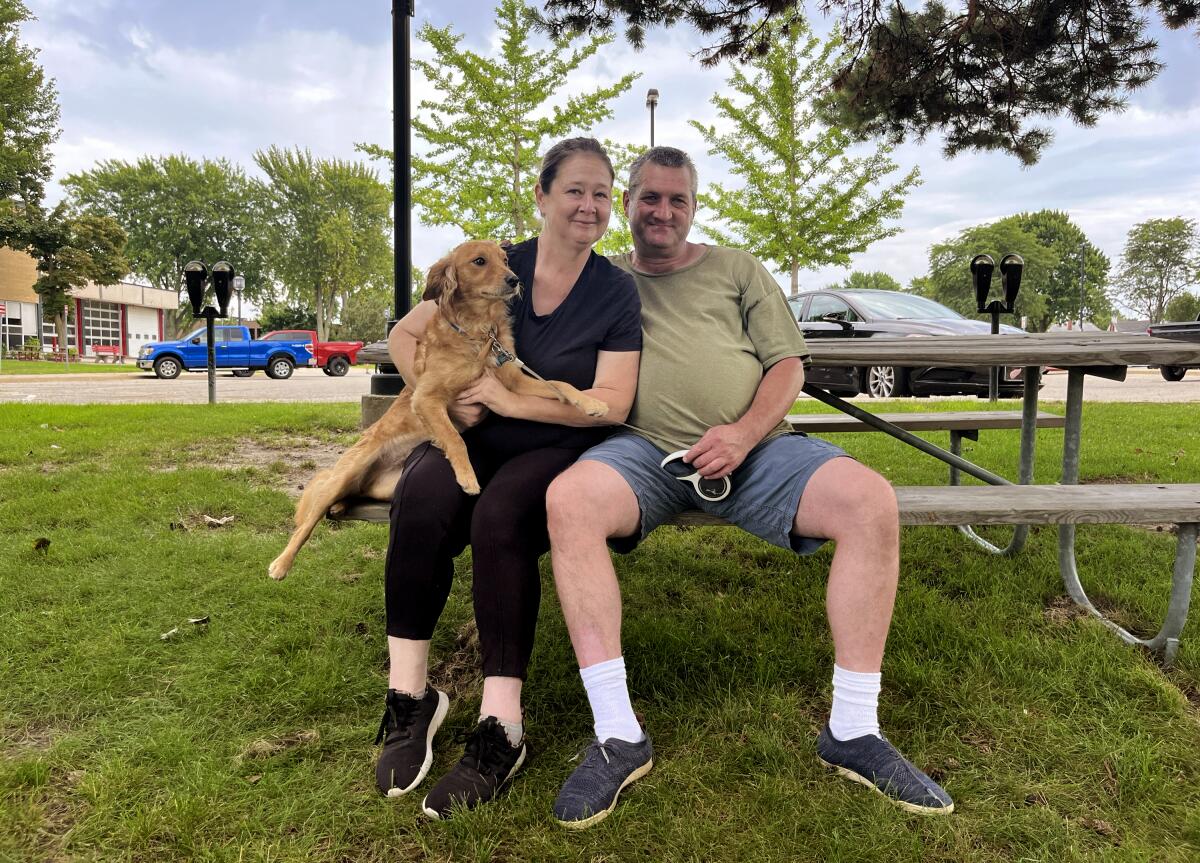
Mickey Kraft, right, and Kristy Kitchen sit in a park in Mount Clemens, Michigan, with Kraft's dog.
(Connor Sheets/Los Angeles Times)
In conversations with several people enjoying a green space in the shadow of Mount Clemens City Hall on Monday, the prevailing sentiment, as in many more rural areas, was that the 2024 presidential campaign season is boring and passing by without much fanfare.
Mickey Kraft and Kristy Kitchen, both Trump supporters, said they believe many people's enthusiasm for the former president has waned.
“People love Trump and everything, but some people are tired of his antics,” said Kraft, 52.
Kitchen, 47, added that she's “not afraid to put a Trump sign on my lawn” in nearby Roseville, but believes many people will opt out of that ritual this year.
“People don’t care who the president is,” he said. “They care about who gives them money. They care about the price of gasoline, how much food costs.”
Some rural and suburban Michiganders also reported a general sense of unease and even fear, particularly those who say they felt spooked by the attempted assassination of Trump at a rally in Pennsylvania last month. Kitchen said she “kind of shut down” her previously active Facebook account after the attack because the political rhetoric had become too heated.
Raffy Castro, 22, was fishing for bass from a dock on the Clinton River on Monday afternoon. Although this will be the first election the Sterling Heights resident has ever voted in, he recalled that there had been much greater enthusiasm in the lead-up to the 2020 election.
“I haven’t heard anyone talk about it,” he said. “I think people are scared, especially with the shooting. I guess people don’t want to show who they support.”
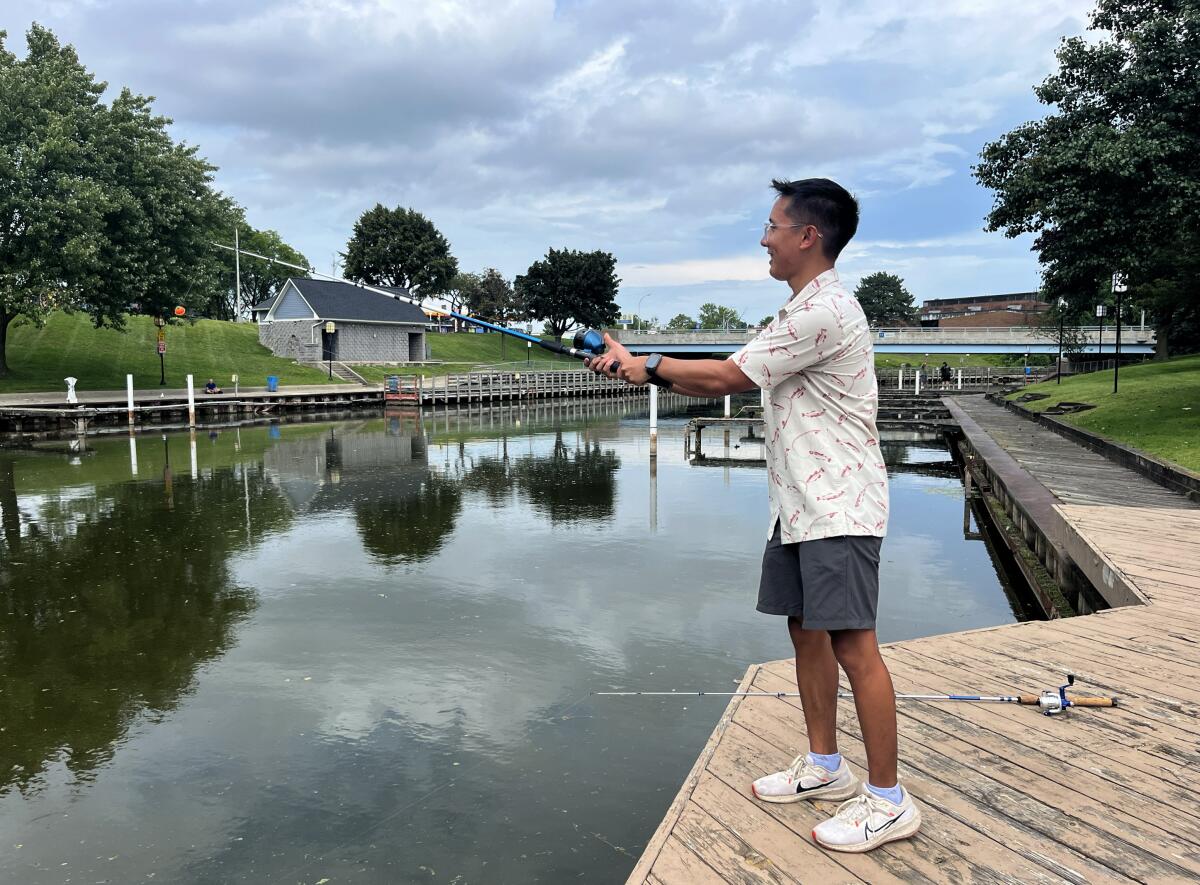
Raffy Castro fishes in the Clinton River at a park in Mount Clemens, Michigan.
(Connor Sheets/Los Angeles Times)
In Clare, a rural town about 150 miles northwest of Mount Clemens, Gene and Cindy Gibson attributed the lack of enthusiasm to broader unrest.
“I think a lot of people are voting for the lesser of two evils,” Gene Gibson said of Trump and Harris. “And people don’t want to vote for either of them. They’re tired of all the fighting.”
Whatever the reason, Matthew Grossmann, director of the Institute for Public Policy and Social Research at Michigan State University, said the level of public political expression this year has a different feel.
“In 2016 and 2020, people didn’t wait for signs to be made,” he said. “They were making them themselves and painting the sides of barns, and we’re seeing a lot less of that.”

